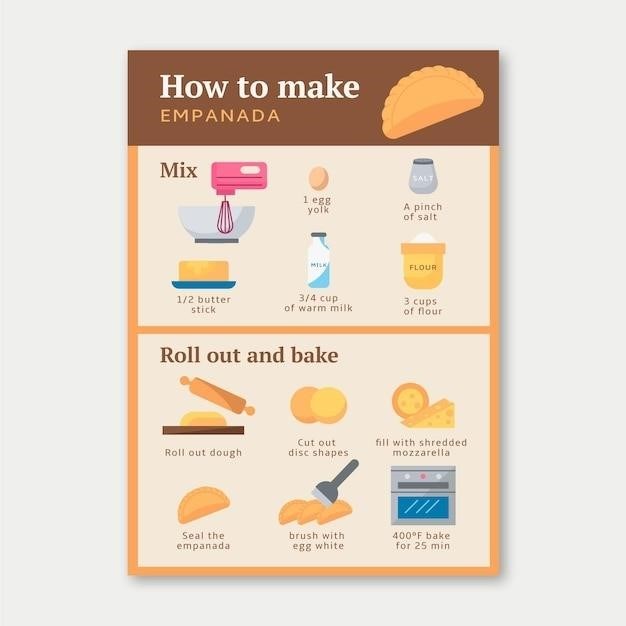Gardner Bender GDT-311 Digital Multimeter⁚ A Comprehensive Guide
This manual is intended to provide basic information regarding this meter and to describe common test procedures which can be made with this unit. Many types of …

Introduction
The Gardner Bender GDT-311 Digital Multimeter is a versatile and reliable tool designed for a wide range of electrical testing applications. This comprehensive manual serves as your guide to understanding the features, functions, and safe operation of the GDT-311. This manual is your primary source for information on the operation of the GDT-311, and it should be read and understood completely before using the meter. This manual will guide you through the essential aspects of the GDT-311, from its key features and functions to safety precautions, operating instructions, and troubleshooting tips.
The GDT-311 is a 3-function, 14-range digital multimeter that provides accurate measurements of AC/DC voltage, resistance, and continuity. It is equipped with a clear 3.5-inch digital display, manual ranging, and a durable design, making it an ideal choice for both professionals and DIY enthusiasts. Whether you’re troubleshooting household appliances, performing automotive diagnostics, or working on electronic projects, the GDT-311 provides the necessary tools to ensure safe and accurate measurements.
This manual is designed to be user-friendly and informative. It includes detailed illustrations, clear explanations, and practical examples to make it easy for you to understand and operate the GDT-311. By following the instructions and safety guidelines outlined in this manual, you can maximize the performance and longevity of your multimeter.
Key Features and Functions
The Gardner Bender GDT-311 Digital Multimeter boasts a range of features designed to enhance its usability and accuracy. These features make the GDT-311 a powerful tool for various electrical testing applications. Here’s a detailed breakdown of its key features and functions⁚
- 3-Function, 14-Range Digital Multimeter⁚ The GDT-311 is equipped to measure AC/DC voltage, resistance, and continuity across a wide range of values. Its 14 distinct ranges provide flexibility for various testing scenarios.
- Manual Ranging⁚ The GDT-311 utilizes manual ranging, allowing you to manually select the appropriate range for your measurement. This feature provides greater control over the measurement process and ensures accurate readings.
- Easy-to-Read 3.5-Inch Digital Display⁚ The GDT-311 features a large, clear digital display for easy readability. The 3.5-inch display provides a clear view of measurement values, even in low-light conditions.
- 2000 Count Digital Display⁚ The GDT-311’s digital display offers a resolution of 2000 counts, ensuring precise readings with a high level of detail. This resolution allows for accurate measurements across a wide range of values.
- Durable Design⁚ The GDT-311 is built with durability in mind, featuring a robust construction that can withstand the rigors of everyday use. Its sturdy design ensures reliable performance in various environments.
These features, combined with its user-friendly interface, make the GDT-311 a valuable tool for professionals and DIY enthusiasts alike. Its comprehensive capabilities and reliable performance ensure accurate and safe electrical testing for a wide range of applications.
Safety Precautions
When working with electrical equipment, safety is paramount. The Gardner Bender GDT-311 Digital Multimeter, while a valuable tool, requires careful handling to prevent potential hazards. This section outlines essential safety precautions to ensure your safety and the integrity of the device⁚
- Always Wear Appropriate Safety Gear⁚ Before using the GDT-311, always wear safety goggles to protect your eyes from potential debris or sparks. Additionally, use insulated gloves to prevent electrical shock when working with live circuits.
- Never Test Circuits Above 600 Volts⁚ The GDT-311 is designed for use with circuits up to 600 volts. Exceeding this voltage limit can damage the multimeter and potentially cause electrical shock.
- Avoid Contact with Live Wires⁚ Always ensure that the circuit is de-energized before connecting the GDT-311. Never touch live wires with your hands or any conductive objects. Use insulated probes or tools to make connections.
- Inspect the Multimeter Regularly⁚ Before each use, inspect the GDT-311 for any signs of damage, such as cracks, broken probes, or frayed wires. If any damage is detected, discontinue use and contact Gardner Bender for repair or replacement.
- Keep the Multimeter Clean and Dry⁚ Avoid exposing the GDT-311 to excessive moisture or dust. Clean the device regularly with a soft, dry cloth. Do not use harsh chemicals or solvents to clean the multimeter.
By adhering to these safety precautions, you can minimize the risk of electrical shock, injury, and equipment damage. Always prioritize safety and ensure a safe working environment when using the GDT-311 Digital Multimeter.
Operating Instructions
The Gardner Bender GDT-311 Digital Multimeter is designed for ease of use, offering a straightforward approach to electrical measurements. This section provides detailed instructions on operating the GDT-311, enabling you to confidently utilize its features for various testing applications⁚
- Select the Desired Function and Range⁚ Begin by rotating the dial to the desired function and range. The GDT-311 offers multiple functions, including AC/DC voltage measurement, resistance measurement, and continuity testing. Each function has various range settings to accommodate different voltage and resistance values.
- Connect the Probes⁚ Connect the red probe to the positive (+) terminal and the black probe to the negative (-) terminal of the GDT-311. Ensure secure connections to prevent false readings or electrical hazards.
- Connect to the Circuit⁚ Carefully connect the probes to the circuit you wish to test. Remember to always disconnect the circuit from power before making any connections. Use caution when working with live circuits.
- Read the Display⁚ Once the probes are connected, observe the digital display to read the measured value. The display provides a clear and accurate reading of the measured voltage, resistance, or continuity.
- Disconnect the Probes⁚ After completing the measurement, disconnect the probes from the circuit. Always ensure the circuit is de-energized before disconnecting the probes to prevent electrical hazards.
By following these simple steps, you can effectively operate the GDT-311 Digital Multimeter for various electrical testing tasks. Refer to the GDT-311 user manual for detailed information on specific functions and range settings.
1.1 Functions
The Gardner Bender GDT-311 Digital Multimeter is equipped with a range of functions designed to simplify electrical testing. These functions, clearly labeled on the rotary dial, enable you to measure various electrical parameters with ease. The GDT-311’s key functions include⁚
- AC/DC Voltage Measurement⁚ This function allows you to measure both alternating current (AC) and direct current (DC) voltage. The GDT-311 has multiple range settings for AC/DC voltage measurement, enabling you to test a variety of circuits.
- Resistance Measurement⁚ This function lets you measure the resistance of a circuit or component. The resistance measurement function is essential for troubleshooting electrical problems and ensuring proper circuit operation. Like voltage measurement, the GDT-311 offers several ranges for resistance measurement, accommodating different resistance values.
- Continuity Testing⁚ This function allows you to check the continuity of a circuit or component. Continuity testing is crucial for identifying breaks or open circuits, which can cause electrical malfunctions. The GDT-311 uses a beep sound to indicate continuity.
These functions, combined with the GDT-311’s user-friendly interface, make it a versatile tool for a wide range of electrical testing tasks. Before using the GDT-311, carefully review the user manual for detailed instructions on each function and its appropriate usage.
1.2 Operating Suggestions
To ensure safe and accurate operation of your Gardner Bender GDT-311 Digital Multimeter, consider the following operating suggestions⁚
- Always Use Proper Safety Precautions⁚ Electricity can be dangerous. Always wear appropriate safety gear, such as insulated gloves and safety glasses, when working with electrical circuits. Never work on live circuits without proper training and experience.
- Start with the Highest Range Setting⁚ When measuring voltage or resistance, always start with the highest range setting on the GDT-311. Gradually reduce the range setting until you obtain a stable reading. This helps protect the meter from damage caused by excessive current or voltage.
- Avoid Overloading the Meter⁚ Each range setting on the GDT-311 has a maximum value it can handle. Exceeding this value can damage the meter. Always refer to the user manual for the specific range limits of each function.
- Keep the Leads Clean and Dry⁚ Dirt and moisture on the test leads can affect the accuracy of your measurements. Regularly clean the leads with a soft cloth and ensure they are dry before using the meter.
- Store the Meter Properly⁚ When not in use, store the GDT-311 in a dry, cool place, away from direct sunlight or extreme temperatures. Proper storage helps prolong the life of the meter and maintain its accuracy.
By following these operating suggestions, you can ensure the safe and reliable performance of your Gardner Bender GDT-311 Digital Multimeter.
Testing Procedures
The Gardner Bender GDT-311 Digital Multimeter is a versatile tool for a range of electrical testing tasks. To ensure accurate and safe operation, it’s essential to understand the proper testing procedures for each function. This section outlines the basic steps for common electrical measurements using the GDT-311. However, always refer to the user manual for detailed instructions and safety precautions before performing any electrical measurements.
Before starting any test, ensure the GDT-311 is set to the appropriate function and range. Always start with the highest range setting and gradually reduce it until you obtain a stable reading.
When working with electrical circuits, always prioritize safety. Use appropriate safety gear, such as insulated gloves and safety glasses, and never work on live circuits without proper training and experience.
The GDT-311 is designed to measure AC/DC voltage, resistance, and continuity. Each function has specific procedures and precautions that must be followed for accurate and safe operation.
This manual outlines the basic principles of electrical testing using the GDT-311. For detailed instructions, safety precautions, and specific applications, always refer to the user manual provided with the meter.
2.1 AC/DC Voltage Measurement
Measuring AC/DC voltage with the Gardner Bender GDT-311 is a fundamental electrical test. This procedure involves using the multimeter to determine the electrical potential difference between two points in a circuit. The GDT-311 provides a range of settings for both AC and DC voltage, allowing you to measure a wide variety of electrical systems.
To measure AC/DC voltage, select the appropriate voltage function and range on the dial. Connect the red test lead to the positive terminal of the circuit and the black test lead to the negative terminal. Ensure that the leads are properly secured to the terminals. The display will show the measured voltage.
When measuring AC voltage, remember that the GDT-311 is designed to measure the root-mean-square (RMS) value of the voltage waveform. This value represents the effective voltage of the AC signal.
Always follow safety precautions when working with electrical circuits. Never touch live wires or components with your bare hands. Use insulated tools and safety gear, and disconnect the power source before working on any circuit.
The GDT-311 Digital Multimeter can measure AC/DC voltage, resistance, and continuity. The user manual outlines detailed instructions and safety precautions for each function.
2.2 Resistance Measurement
Resistance measurement using the Gardner Bender GDT-311 multimeter is a crucial test for determining the opposition to current flow in a circuit. This procedure involves applying a small voltage across the component or circuit under test and measuring the resulting current flow. The GDT-311 calculates and displays the resistance value based on Ohm’s Law.
To measure resistance, select the “Ω” (Ohm) function on the dial and choose the appropriate range based on the expected resistance value. Ensure the circuit is de-energized before connecting the test leads. Connect the red test lead to one end of the component or circuit under test and the black test lead to the other end. The display will show the measured resistance value in ohms.
When measuring resistance, ensure that the circuit is completely disconnected from any power source. This prevents any voltage from affecting the measurement and potentially damaging the multimeter. Always double-check the circuit is de-energized before connecting the test leads.
The GDT-311 is a versatile multimeter with a range of functions, including AC/DC voltage measurement, resistance measurement, and continuity testing. The user manual provides comprehensive instructions and safety precautions for each function.

















